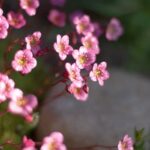Lava rock landscaping ideas have become increasingly popular in the world of outdoor design. Incorporating lava rock into your landscape can create a unique and visually striking environment that is both low-maintenance and durable. From garden beds to pathways, and even outdoor fire pit designs, lava rock offers a versatile and long-lasting solution for enhancing the aesthetic appeal of your outdoor space.
When considering lava rock for landscaping, it’s important to understand the benefits it can offer as well as the different types available. This article will delve into the various uses of lava rock in outdoor design, including color combinations, aesthetics, pathways, garden bed ideas, fire pit designs and water features. Additionally, we will explore maintenance tips for keeping your lava rock landscaping looking fresh and vibrant all year round.
Whether you live in a region with a warm or cool climate, there are unique lava rock landscaping ideas that can be tailored to suit your specific location. By the end of this article, you will have gained valuable insight into how to effectively incorporate lava rock into your outdoor space to create a stunning, low-maintenance landscape that is sure to impress.
Benefits of Using Lava Rock in Landscaping
Cost-Effective and Durable
One of the key benefits of using lava rock in landscaping is its cost-effectiveness and durability. Lava rock is a natural, lightweight, and long-lasting material that can withstand harsh weather conditions, making it an ideal choice for outdoor spaces. Unlike other landscaping materials, lava rock does not decompose or break down easily, reducing the need for frequent replacement or maintenance.
Low Maintenance and Weed Control
Another advantage of incorporating lava rock into your landscaping design is its low maintenance requirement. Lava rock helps to control weeds by providing a barrier between the soil and the sun, preventing weed growth. This reduces the need for chemical weed killers or constant weeding, making it a hassle-free option for homeowners looking to maintain a tidy and well-kept outdoor space.
Environmental Benefits
In addition to its practical benefits, using lava rock in landscaping also offers environmental advantages. Lava rock is a sustainable and eco-friendly option as it is a natural resource that does not require extensive processing or manufacturing. By choosing lava rock for your landscaping needs, you can contribute to sustainability efforts while creating a visually appealing outdoor environment.
By considering these benefits of using lava rock in landscaping, homeowners can enhance their outdoor spaces with cost-effective, low-maintenance, and environmentally friendly design elements that stand the test of time. Whether it’s creating pathways and walkways, garden bed ideas, or unique fire pit designs, lava rock offers endless possibilities for transforming any outdoor area into a beautiful and functional landscape.
Incorporating lava rock into water features can also add an interesting texture and color contrast to elevate the overall aesthetic appeal of your outdoor space.
Types of Lava Rock for Landscaping
Lava rock landscaping ideas can be brought to life with the different types of lava rock available for use. Each type has its own unique characteristics and can be used to achieve different landscaping styles. Here are some common types of lava rock for landscaping:
- Black Lava Rock: This type of lava rock is a popular choice due to its dramatic, bold color. It can be used to create striking contrast in a variety of landscaping designs.
- Red Lava Rock: Red lava rock adds warmth and vibrancy to landscaping. It is often used to create a more natural and organic look in garden beds or around water features.
- Mixed Color Lava Rock: For those who want a more varied color palette, mixed color lava rock combines black, red, and brown tones. This allows for more flexibility in creating unique and visually interesting landscapes.
Incorporating these different types of lava rock into your landscaping can have a significant impact on the overall aesthetic. By understanding the characteristics of each type, you can make informed decisions on how to best utilize them in your design.
When using lava rock for landscaping, it’s important to consider both the visual appeal and the practical benefits. Different types of lava rock offer various textures as well as drainage properties, which can influence their suitability for specific areas within your landscape design.
Whether you’re looking to create a sleek modern look with black lava rock pathways or add a pop of color with red lava rock garden beds, there are endless possibilities for incorporating these versatile materials into your outdoor space.
Color Combinations and Aesthetics
When it comes to using lava rock in landscaping, one of the key factors to consider is its color and how it complements the overall aesthetics of your outdoor space. Lava rock comes in a variety of natural colors such as black, brown, red, and gray, offering a wide range of options for creating visually appealing landscapes. The colors of lava rock can be used to create stunning contrasts or blend seamlessly with existing plants and hardscapes in your yard.
Incorporating different color combinations of lava rock into your landscaping design can add depth and dimension to your outdoor space. For example, pairing black lava rock with vibrant green plants can create a striking visual impact that draws attention to specific areas of your landscape. On the other hand, using red or brown lava rock as mulch around trees or shrubs can provide a warm and natural look that enhances the overall beauty of your garden.
A popular way to achieve aesthetically pleasing results with lava rock landscaping is by creating patterns and designs using different colored rocks. Whether you prefer a zen-inspired gravel garden with subtle color variations or a bold mosaic pathway made from assorted lava rocks, the versatility of lava rock allows for endless creative possibilities in designing unique and eye-catching landscapes.
| Color Combinations | Aesthetic Results |
|---|---|
| Black lava rock with green plants | Striking visual impact |
| Brown or red lava rock as mulch | Warm and natural look |
| Mosaic pathways with assorted lava rocks | Unique and eye-catching landscapes |
Lava Rock Pathways and Walkways
Lava rock is a versatile landscaping material that can be used to create stunning pathways and walkways in any outdoor space. The unique texture and color of lava rock can add visual interest to your landscape while also providing a durable and long-lasting surface for foot traffic.
One of the key benefits of using lava rock for pathways and walkways is its natural ability to promote drainage. Lava rock is porous, allowing water to pass through easily, which can help prevent puddling and erosion. This makes it an ideal choice for areas that receive heavy rainfall or irrigation.
When it comes to designing pathways and walkways with lava rock, there are endless possibilities. You can create a simple, natural-looking path by scattering lava rock over a base of compacted soil or sand, or you can use larger pieces of lava rock to define the edges of the path for a more formal look. Combining different sizes and colors of lava rock can also add depth and visual appeal to your pathways.
Another creative option for using lava rock in pathways is to incorporate it into mosaic designs. By arranging lava rocks in intricate patterns or creating images within the pathway surface, you can transform an ordinary walkway into a true work of art.
Using Lava Rock in Water Features
Now let’s talk about how you can use this amazing volcanic material in water features.
Lava rocks can be used around ponds or in pondless waterfalls as decorative elements that help enhance the overall aesthetic of your water feature. One goal could be to make sure that the appearance complements perfectly with its surroundings this while still pulling off an impressive display on its own along the way.
The porous texture allows them evenly spread out rainwater throughout their surfaces making sure soil never gets oversaturated regardless if we are talking about dry streams water gardens.
It’s important not only has decorative but functional adds up great protection from UV exposure if placed under direct sunlight while giving shelter from bottom feeders fish species they actively consume naturally decomposing microorganisms sticking at inside openings whilst ensuring ideal algae growth conditions hand in hand with some other aquatic plants.
Lava Rock Garden Bed Ideas
Creating Texture and Contrast
One of the key benefits of using lava rocks in garden beds is the ability to create texture and contrast. The natural red, brown, or black hues of lava rocks can be used to complement the colors of your plants and flowers. They can also add visual interest by creating varying heights and depths within the garden bed.
Xeriscaping With Lava Rocks
For those interested in xeriscaping or creating a drought-resistant landscape, lava rocks can be an excellent alternative to traditional mulch. Their porous nature allows for water infiltration while preventing evaporation, making them an ideal choice for conserving water in drier regions.
Combining Lava Rocks With Plants
Incorporating lava rocks into your garden beds doesn’t mean sacrificing plant life. In fact, many succulents and cacti thrive when planted alongside lava rocks due to the well-draining characteristics of the soil they create. This combination not only adds an exotic touch but also promotes healthier plant growth in arid environments.
By exploring different types of lava rock for landscaping and utilizing creative design techniques, you can transform your garden beds into unique focal points that require minimal upkeep. With the right selection and placement of lava rocks, you can achieve a stunning and sustainable garden design that will impress visitors and enhance your outdoor space.
Lava Rock Outdoor Fire Pit Designs
Lava rock outdoor fire pits are a great way to add warmth and ambiance to your backyard, while also incorporating the natural beauty of lava rock into your landscaping. Here are some ideas for incorporating lava rock into your outdoor fire pit designs:
1. Lava Rock Fire Pit Surround: Use lava rocks to create a surround for your fire pit. This can be done by stacking lava rocks around the perimeter of the fire pit to create a natural and rustic look.
2. Lava Rock Fire Glass: Instead of traditional firewood, consider using lava rock fire glass in your fire pit. The glass comes in various colors and sizes, creating a modern and stylish look that contrasts beautifully with the rough texture of the lava rock.
3. Lava Rock Seating Area: Create a seating area around your fire pit using large lava rocks as natural seating or as a base for outdoor furniture. This will tie the space together with the rest of your landscaping and provide an inviting area for gathering with friends and family.
When designing an outdoor fire pit with lava rocks, it’s important to consider safety and proper ventilation. Always follow local regulations and guidelines for building outdoor fire features, and ensure that your design allows for proper airflow to keep the fire burning safely. With these ideas, you can incorporate the unique texture and color of lava rock into your outdoor living space, creating a stunning focal point for gatherings and relaxation.
Maintenance Tips for Lava Rock Landscaping
Lava rock is a versatile and popular choice for landscaping due to its unique texture, durability, and low maintenance requirements. However, to keep your lava rock landscaping looking its best, regular maintenance is necessary. Here are some tips to help you maintain your lava rock landscaping.
One important aspect of maintaining lava rock landscaping is keeping it free from debris. Over time, leaves, dirt, and other debris can accumulate on the surface of the rocks, detracting from their natural beauty. Regularly sweeping or blowing away any debris will help keep your lava rock landscaping looking clean and well-maintained.
It’s also important to regularly check for weed growth in your lava rock landscaping. Weeds can quickly take root in the crevices between the rocks, marring the appearance of your landscaping. To prevent weed growth, consider using a weed barrier fabric underneath the lava rocks or applying a pre-emergent herbicide.
In addition to keeping the surface of the rocks clean and free from weeds, it’s also important to periodically inspect the overall condition of the lava rocks themselves. Look for any signs of damage or erosion, and replace any damaged or worn-out rocks as needed. By staying proactive with maintenance, you can ensure that your lava rock landscaping continues to enhance your outdoor space for years to come.
Using Lava Rock in Water Features
Lava rock is a versatile landscaping material that can be used in a variety of ways to enhance outdoor spaces. One unique way to incorporate lava rock into your landscape design is by using it in water features. Lava rock can add texture, depth, and visual interest to any water feature, whether it’s a small fountain or a large pond.
One popular way to use lava rock in water features is by creating a natural-looking waterfall. By strategically placing lava rocks of varying sizes and shapes, you can create a visually appealing and organic looking waterfall that will enhance the overall aesthetic of your outdoor space. Additionally, using lava rock in this way can help to create a more natural habitat for aquatic plants and wildlife.
In addition to waterfalls, lava rock can also be used to line the edges of ponds or streams. The porous nature of lava rock allows for water to flow through it, making it an ideal material for filtration in water features.
Plus, the natural earthy colors of lava rock can create an attractive border for your pond or stream, adding visual appeal to your landscape. Whether you’re designing a small backyard pond or a larger naturalistic feature, lava rock can be a valuable addition to your water feature design.
Unique Lava Rock Landscaping Ideas for Different Regions
In conclusion, lava rock landscaping offers a unique and versatile option for enhancing the beauty of outdoor spaces. From pathways to garden beds to fire pit designs, lava rock can be used in a variety of ways to create stunning landscapes that stand out.
One of the benefits of using lava rock in landscaping is its durability and low maintenance requirements. This volcanic material can withstand harsh weather conditions and does not require frequent replacement or upkeep, making it an ideal choice for both residential and commercial properties.
Regardless of the region where you live, there are endless possibilities for incorporating lava rock into your landscape design. Whether you’re looking to create a modern desert oasis or a lush tropical paradise, lava rock can be used to achieve different aesthetics and complement the natural surroundings. With the right color combinations and creative placements, lava rock can truly transform any outdoor space into a picturesque area that will be enjoyed for years to come.
Incorporating lava rock into your landscaping design can add texture, contrast, and natural beauty to your outdoor space. With proper planning and creativity, you can make use of this versatile material to create unique landscapes that reflect your personal style while also benefiting from its practical advantages. With these ideas in mind, you can start exploring the potential of lava rock landscaping in your own outdoor projects.
Frequently Asked Questions
How Long Does Lava Rock Last in Landscaping?
Lava rock can last for many years in landscaping due to its durable and long-lasting nature. It is a low-maintenance option that can withstand various weather conditions and does not degrade easily over time, making it a popular choice for outdoor decor.
How Do You Landscape With Lava Rocks?
Landscaping with lava rocks involves using them as ground cover, borders, or decorative accents in gardens, pathways, and around trees or shrubs. They can also be used in water features, rock gardens, or as a mulch alternative. Incorporating different sizes of lava rocks can create visual interest and texture within the landscape design.
What Plants Look Good in Lava Rocks?
Many plants look good when paired with lava rocks in landscaping. Succulents like sedum, hens and chicks, or yucca thrive in well-draining soil provided by lava rocks while adding a pop of color against the dark backdrop.
Ornamental grasses like blue fescue or purple fountain grass also complement the rugged appearance of lava rocks. Additionally, native drought-tolerant plants such as lavender, sage, or rosemary are suitable choices for planting among lava rocks.

Welcome to my gardening blog! I am passionate about plants and enjoy sharing my knowledge and experiences with others. In this blog, I will write about everything related to gardening, from tips on how to get started to updates on my own garden projects.





